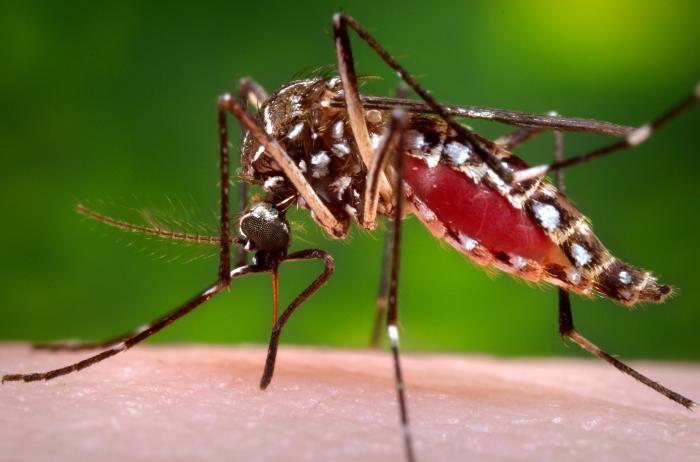In this post, CVR PhD students Steph, Yasmin and Weronika, briefly write about their research (Zika pathogenesis, cat retroviruses and new HepC diagnostics) and the groups that they belong to, as part of a short series of articles from new Contagious Thinking contributors (check the whole team out here). Contagious Thinking serves to communicate the science of the CVR and provide important training and exposure opportunities for our staff and students like this.
If you would like to write a short article about your research, please contact a member of the communications team.
Stephanie Cumberworth – 2nd Year PhD student, Kohl group

I completed my undergraduate studies in Microbiology with Virology at The University of Leeds. During this time I spent a year at The National Institute for Medical Research (NIMR, now part of The Francis Crick Institute) working in department of Molecular Structure, studying the self-association properties of a retroviral capsid protein. It was at the NIMR that I decided that I wanted to pursue research, but also that crystallography wasn’t for me. My interest in arboviruses (arthropod-borne viruses) peaked during my final year of undergraduate studies – around the time I was searching for a PhD position – which is when I found the CVR, which includes arboviral research as a dedicated theme. I now work in the Kohl group on Zika virus (ZIKV) pathogenesis. This is important because the recent ZIKV outbreak originating in Brazil in 2015 has been associated with an unprecedented upsurge in neurodevelopmental disorders in neonates born to mothers infected with ZIKV during pregnancy, such as microcephaly, ophthalmic and auditory impairments.
Other research interests of the Kohl lab include RNA interference and immune signalling pathways of invertebrate and vertebrate hosts respectively, in response to arbovirus infection.
Have a listen to our podcast on arbovirus pathogenesis for more information.
Yasmin Parr – Feline Leukaemia Virus (FeLV) in the Hosie group
What do you work on?

I work on Feline Leukaemia Virus (FeLV) which is a RNA gammaretrovirus that infects domestic cats and other wild felids worldwide. Infection with FeLV, unlike other retroviruses, can result in different infection outcomes that are dependent on a number of host and virus factors. The immune response to infection is known to be a major determinant and the outcomes can be classified accordingly. Cats which have a quick and effective immune response will clear the virus before the infection has had a chance to be fully established, this is known as an abortive infection and these cats are rarely detected. If an effective immune response occurs but later in infection, cats will be viraemic for a period of weeks to months and then recover (regressive infection). Many of these cats can live happy normal cat lives however, if the virus has reached the bone marrow, reactivation may happen later in life. This can be onset by stress or if the cat becomes immunocompromised. Cats that do not produce an effective immune response to infection will be continuously viraemic and develop FeLV associated disease such as leukaemia and lymphoma. This is classed as a progressive infection, and cats usually don’t live longer than 3 years post infection. There is a fourth outcome of infection, known as focal infection, which is when the virus is localised and only produced in a particular tissue, like the mammary gland for example. This outcome is rarely seen in naturally infected cats but can occur in up to 10% of experimentally infected cats.
How do you work on it?
I perform multiple diagnostic tests on cat whole blood, plasma, serum and PBMCs (peripheral blood mononuclear cells) to detect proviral DNA, p27 capsid antigen, reverse transcriptase, FeLV whole virus and antibodies raised in response to infection. This involves using already established diagnostic methods and developing new ones.
Why do you do work on it?
The ability to successfully diagnose a regressively infected cat proves difficult due to the inability to easily detect antibodies and the regulated pipeline of diagnostic tests which prevent the detection of recovered cats with regressive infection. In some settings, such as animal shelters, a single positive FeLV result is enough to warrant the euthanasia of a cat. However, around 60% of cats infected with FeLV can recover from disease, and if we can provide a method of determining the likelihood of recovery we may be able to prevent unnecessary euthanasia of cats.
PhD Aim
During my PhD my aim is to better understand FeLV regressive infections by studying at risk cats (stray cats, shelter cats and cats from multiple cat households) and to develop an assay that can determine the likelihood of a FeLV positive cat recovering from infection.
Margaret Hosie, Yasmin’s PhD supervisor, spoke to our podcast for a special episode on HIV and AIDS about using cat retroviruses as model systems to study HIV biology, pathogenesis and immunity.
Weronika Witkowska (PhD student in the Thomson lab)
Hepatitis C virus (HCV) has infected over 180 million people worldwide with vast majority developing chronic infections. Due to the asymptomatic nature of the infection, the virus remains undetected until serious clinical manifestations such as liver cirrhosis and liver cancer develop often many years after initially encountering the virus.
My project aims to close the gap in diagnosis of HCV by developing a rapid diagnostic test to be used by anyone, anywhere with minimal equipment required. Effective and low-cost point of care tests ensure diagnosis even in resource-limited setting which in turn can help in acquiring quicker more effective treatment with minimal medical manifestations. My project utilises the facilities of the Centre for Virus (CVR) research as well as Biomedical Engineering at the University of Glasgow by relying on loop mediated isothermal amplification (LAMP) and filter paper-based microfluidics. Similarly to PCR LAMP ensures effective nucleic acid amplification and detection, but due to its isothermal temperature it is much more well-adapted to resource-limited settings. The microfluidic paper-device enables effective nucleic-acid extraction at a cost below £1 which in conjugation with LAMP forms a potential candidate for a HCV point-of-care test.

My initial interest in diagnosis and hepatitis C virus developed a few years ago during my undergraduate degree. I came to know that one of my closest relatives has become infected and thus decided to pursue my career in this direction. I have chosen to work on two HCV projects at the CVR during my MRes in Biomedical Sciences. One of my project looked at Directly-acting antiviral treatment resistance while the other looked at HCV vaccination development. Since my relative was unaware of the infection for many years I was made more passionate about effective diagnosis of HCV infection than any other HCV research. Thus I have applied for a PhD, which aims to improve HCV diagnostics. With my relative now cured thanks to the new directly acting antiviral treatment, my passion for fighting this virus continues in the hope that I can help many more people worldwide by detecting this silent killer at the right time.
Emma Thomson spoke to our podcast for a special episode on HIV and AIDS (another aspect of her work outside of HepC) about the continued clinical problem of HIV and AIDS and the need for a vaccine and a cure.
Thank you to CVR PhD students Steph, Yasmin and Weronika for contributing as part of a short series of articles on Contagious Thinking. Look out for more articles from new contributors in the very near future. If you would like to write a short article about your research, please contact a member of the communications team.

